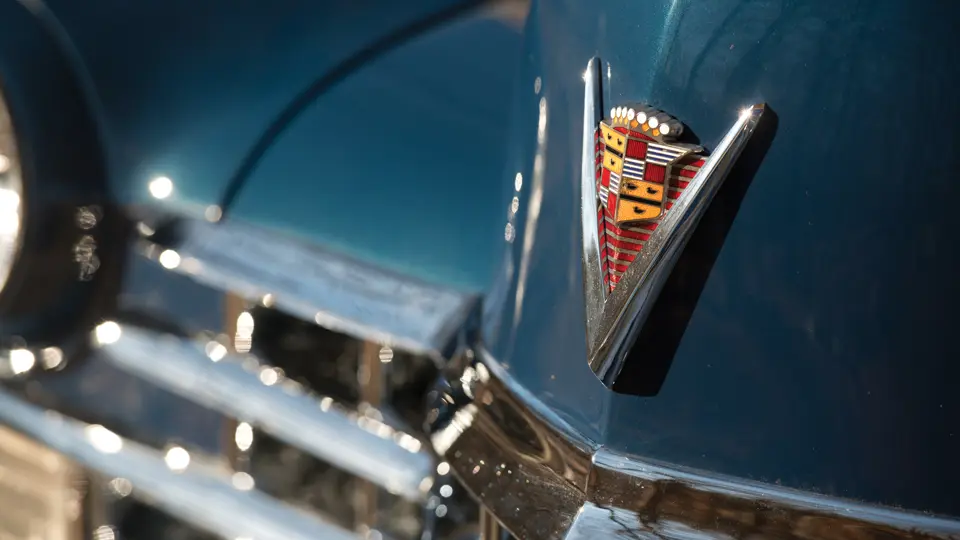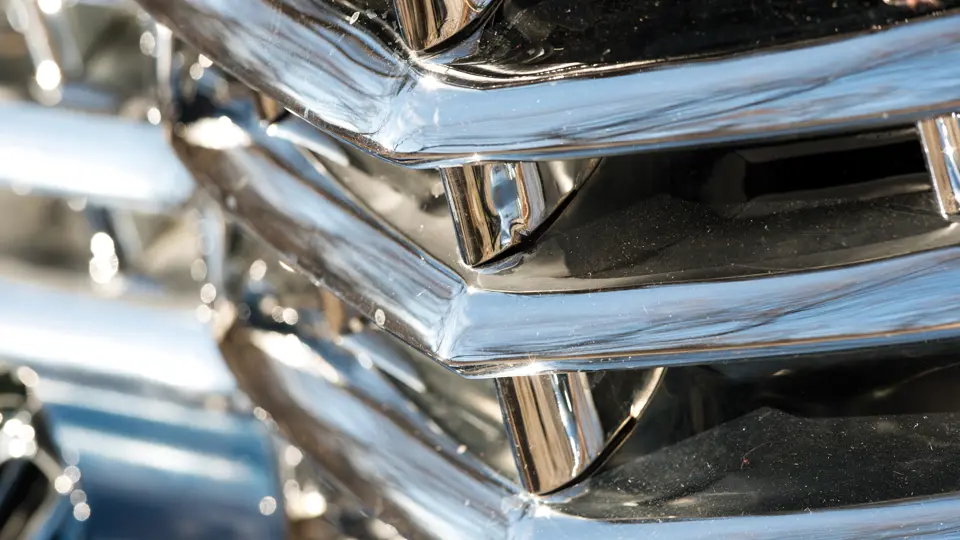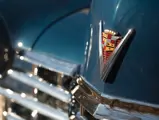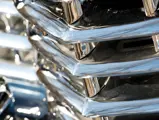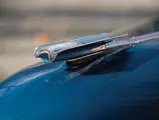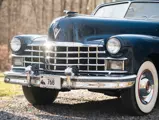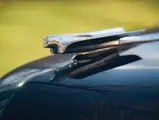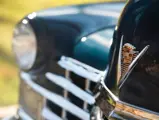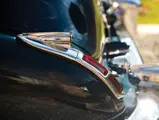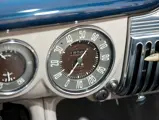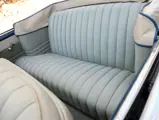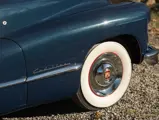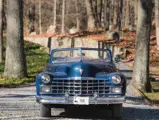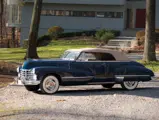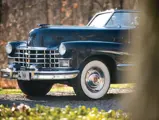Body Style 6267. 150 bhp, 346 cu. in. L-head V-8 engine, four-speed Hydra-Matic transmission, independent front suspension, live rear axle with semi-elliptic leaf springs, and four-wheel hydraulic brakes. Wheelbase: 129 in.
When Cadillac resumed production of passenger cars after World War II, it advertised them as “battle powered” with “victory” engines. All automobile manufacturers had halted their assembly lines by February 1942, but none of them remained idle for very long. All factories were converted to manufacture war materiel, but while most companies made aircraft parts or guns, Cadillac had the enviable position of keeping its engine production going in order to turn out tanks. Cadillac’s first M5 tank was delivered to the Army in April 1942, and it was powered by two Cadillac V-8s with Hydra-Matic transmissions, with one driving each track. In all, the division built six types of tanks and gun carriers, and some 12,000 fighting vehicles were assembled by the time hostilities ended in 1945.
Having its engine plant up and running gave Cadillac an advantage when automobile manufacture was allowed to resume, as its first 1946 model, completed on October 17, 1945, was one of the earliest offered by GM since the end of the war. Of even greater benefit was the real-world stress-testing of engines and transmissions in combat. Although the 1946 Cadillac engines were of the same 346 cubic-inch displacement as the pre-war powerplants and were rated at the same 150 horsepower, many internal parts had been re-engineered for greater strength and reliability as a result of the wartime experience. The Hydra-Matic had also been beefed up.
Just as the 1946 models were a modest makeover of the pre-war ’42s, the 1947s introduced that January were a subtle freshening of the ’46s. There was more brightwork, and modest grille and trim changes were made. The bold “egg-crate” grille had one fewer horizontal bars, and the parking lights became small, round units, unless optional fog lamps were ordered. Rear fender shields, which were rubber on the ’46s, were now made of stainless steel. Particularly noticeable were the large, optional “sombrero” wheel covers. They resembled the iconic Mexican hat and had a deep-dish brim and raised center section with a red Cadillac crest. These quickly became a favorite of hot rodders and Cadillac owners, and they remained on the parts list into the 1950s. Hydra-Lectric window lifts became standard equipment in 1947 on the Series 75 Fleetwoods and Series 62 Convertible, which was the only soft-top. Convertible production of 6,755 cars in 1947 helped Cadillac’s total sales of 61,926 surpass Packard, making them the best-selling American luxury car that year.
This Cadillac, originally delivered to Chicago, was purchased by the current owner about 25 years ago from a family member in California. At the time of purchase, the car was in driver-quality condition. About 10 years ago, he consigned it to Rich and Debbie Fass’s Stone Barn Automobile Restoration in Vienna, New Jersey, for a comprehensive body-on restoration. The engine was in excellent condition, so it was not rebuilt, just thoroughly detailed. Though, in the process, the fuel pump, distributor, and carburetor were rebuilt and an electric fuel pump was added. At that time, the car was returned to the original color of Belden Blue, and the piping for the new beige canvas top was dyed to match the body. The boot cover is similarly detailed, and it is unusual for having cloth upholstery.
The car is fully equipped with a Hydra-Matic transmission, a power top, power windows, a working radio, a heater, windshield washers, backup lights, a driver’s spotlight and mirror, and rear fender skirts. The handsome sombrero wheel covers are nicely set off by whitewall tires and red wheels.
This Cadillac is a veteran of many shows, as it has earned Best in Class at the Greenwich Concours d’Elegance and at Rhinebeck, New York. It scored 99.25 points at the 2004 CCCA Grand Classic in New Jersey, and it won Best in Class at the Fairfield County Concours Grand Classic in Weston, Connecticut, in 2011. Included with the car are photos of the restoration and the “black plates” that were on the car during its California years. This 1947 Cadillac Series 62 Convertible was one of 6,755 built that year, and it is certainly one of the nicest available today.
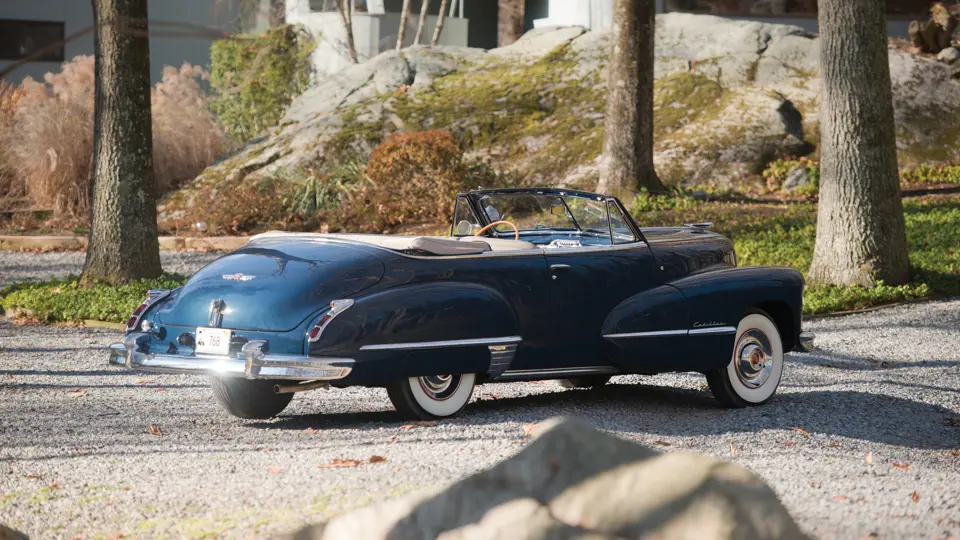
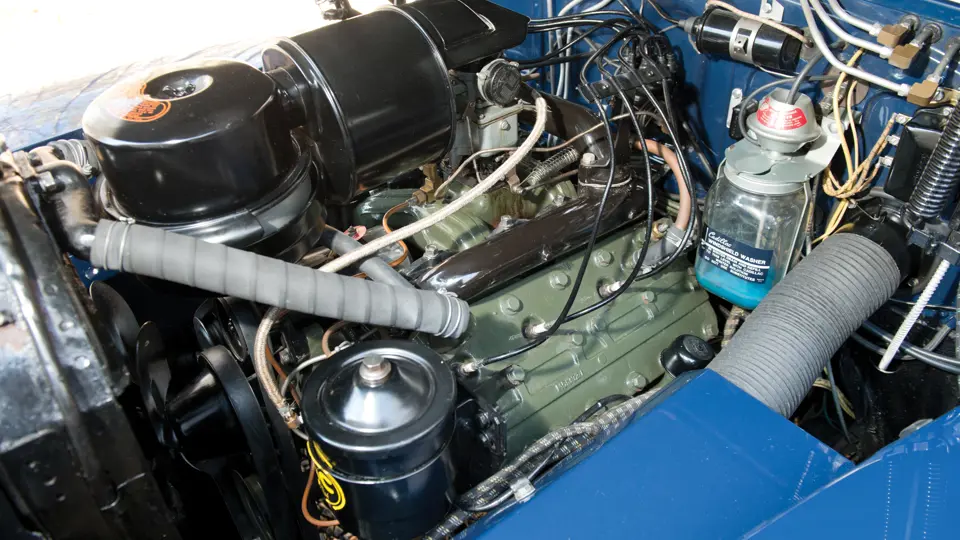


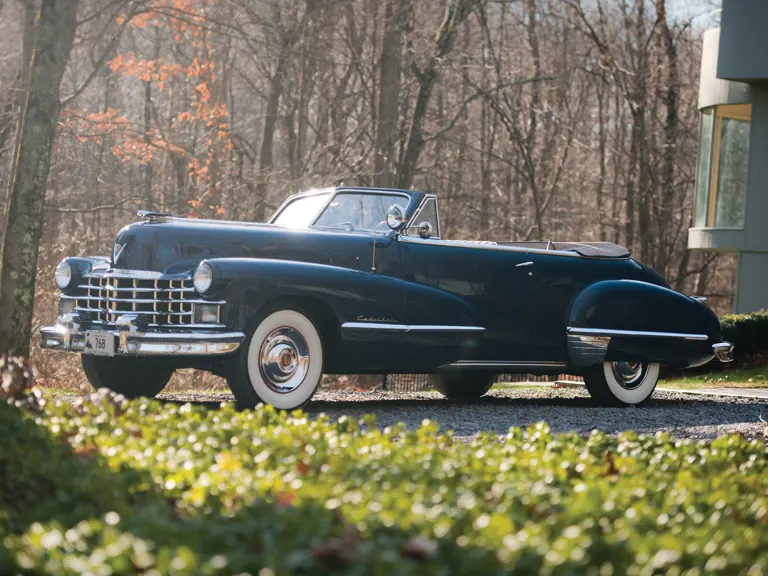
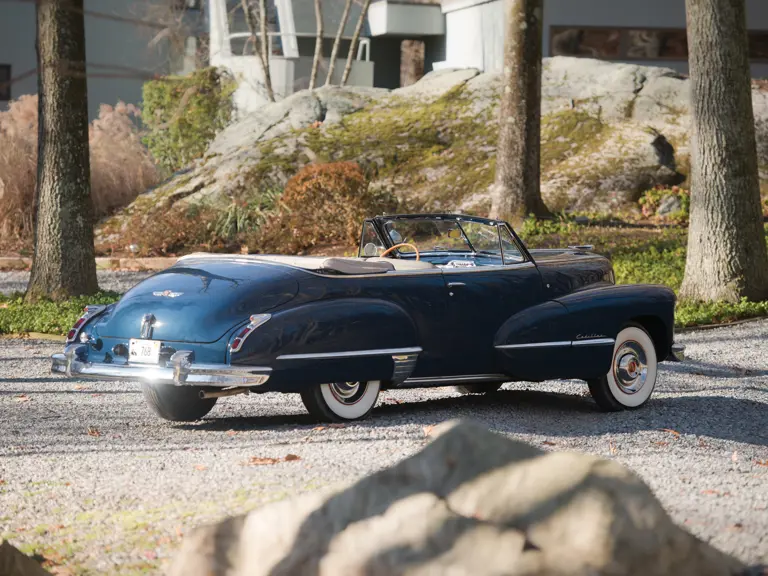
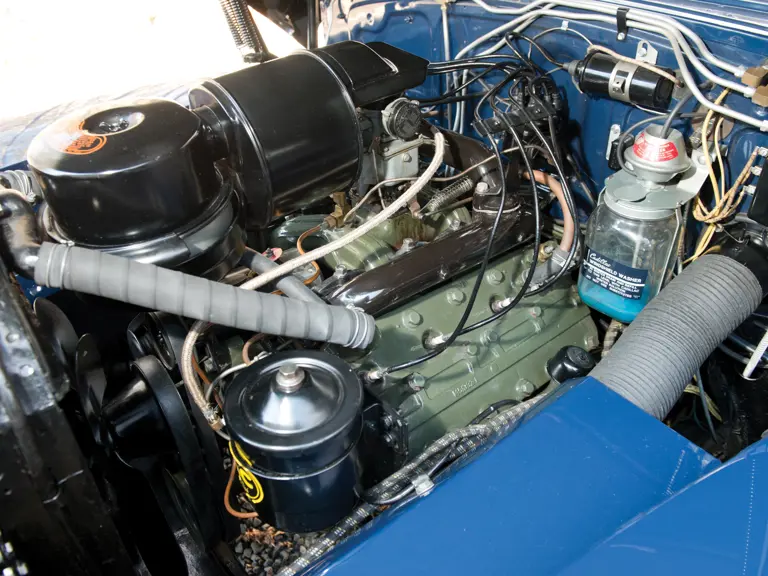
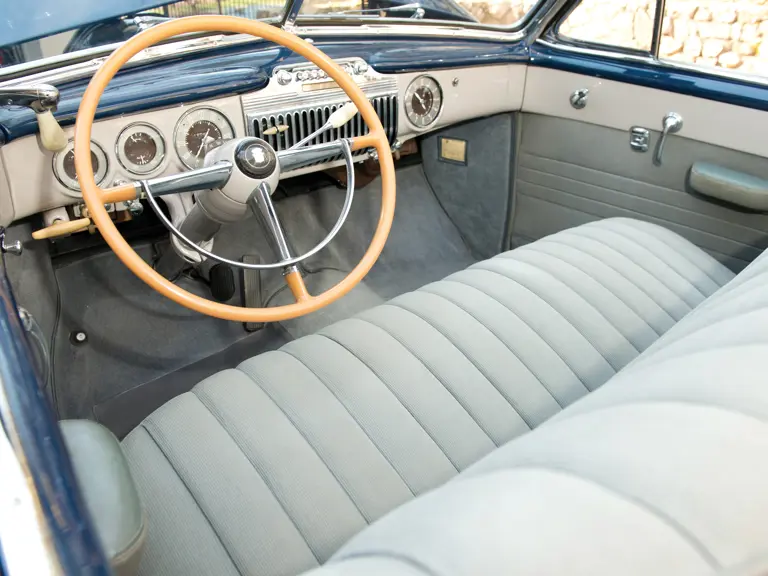

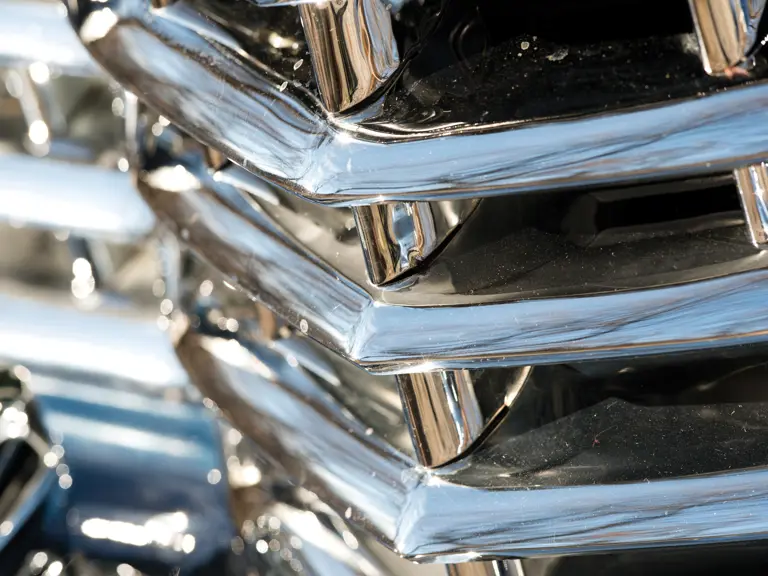

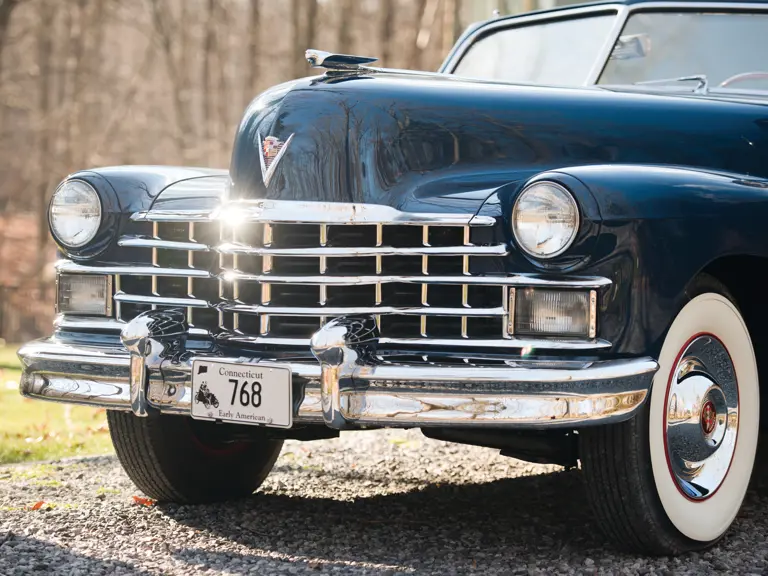

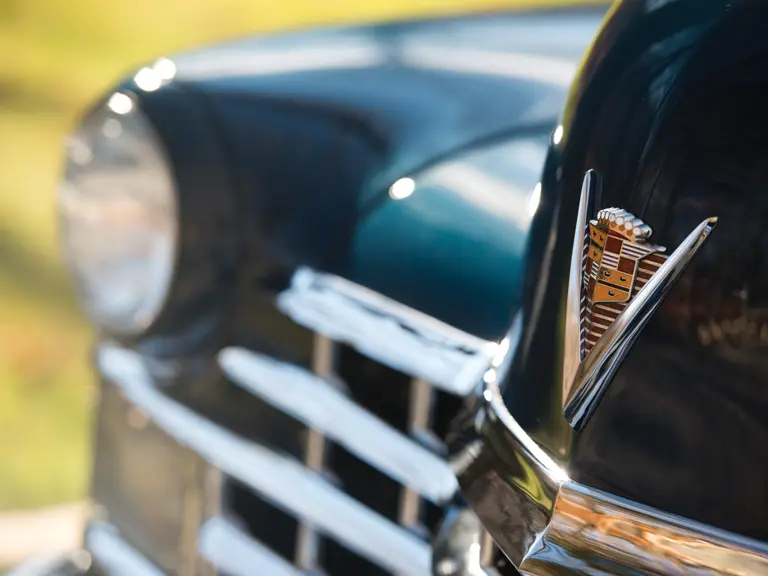
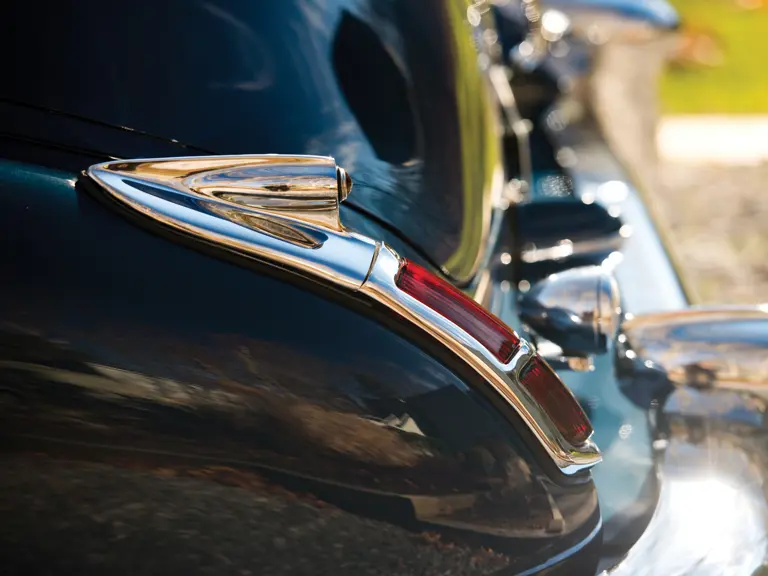
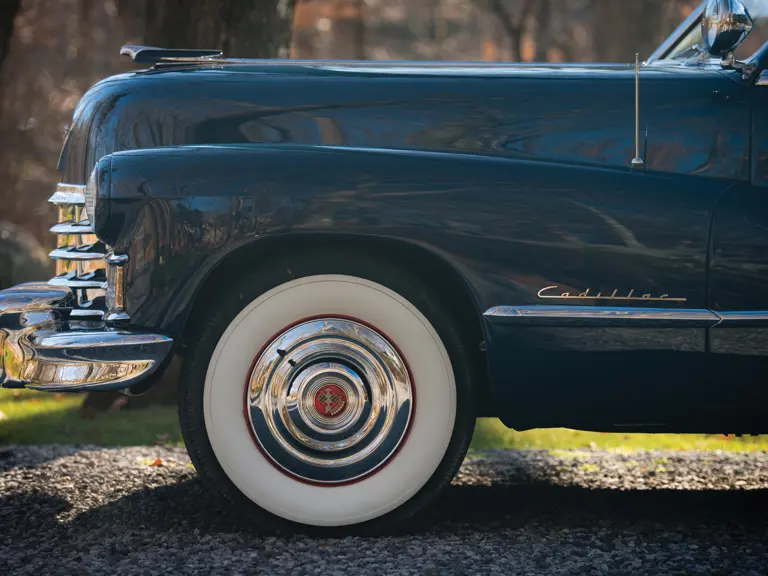
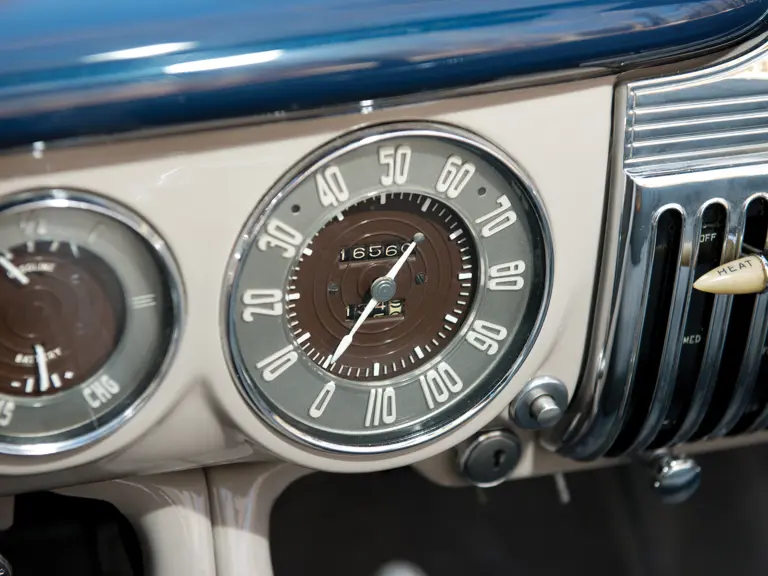
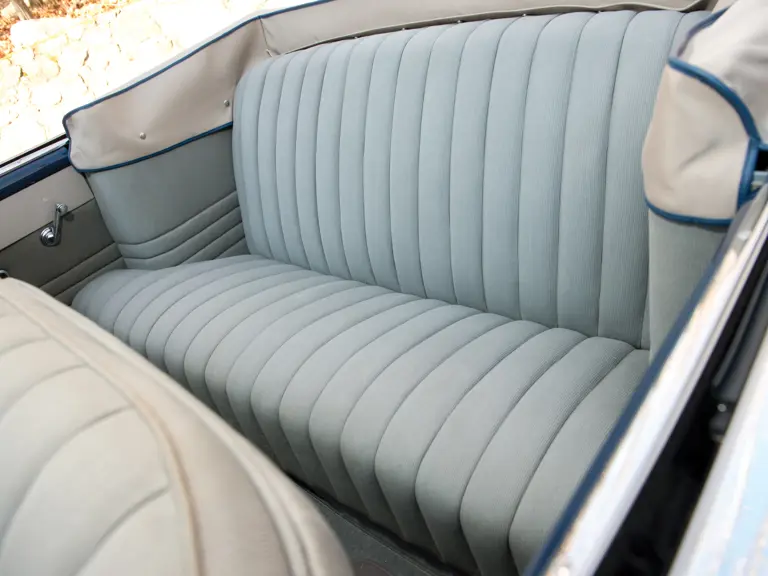
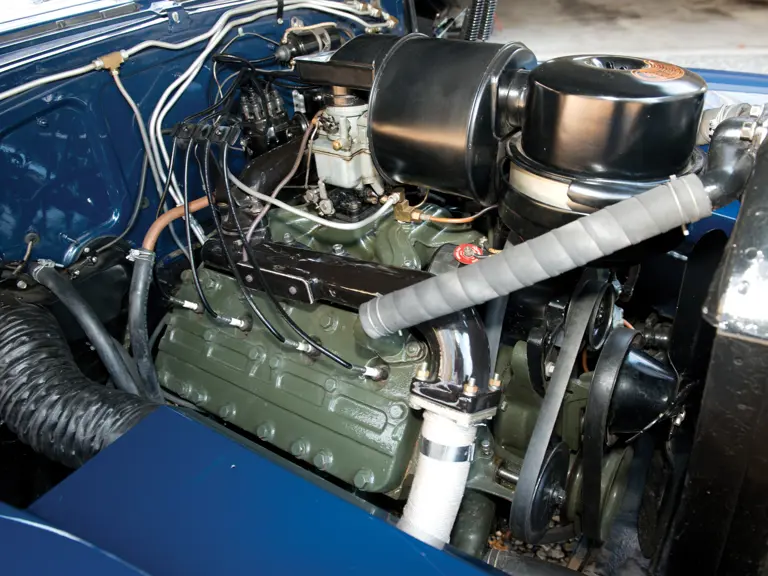
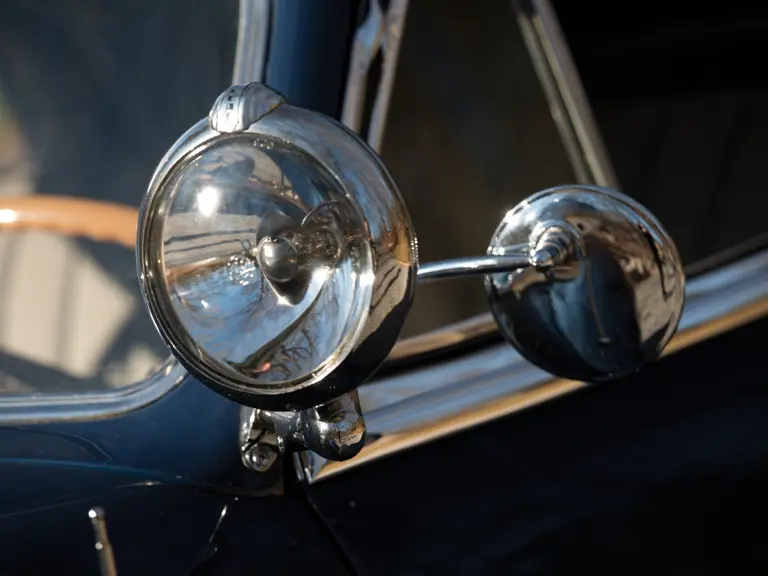
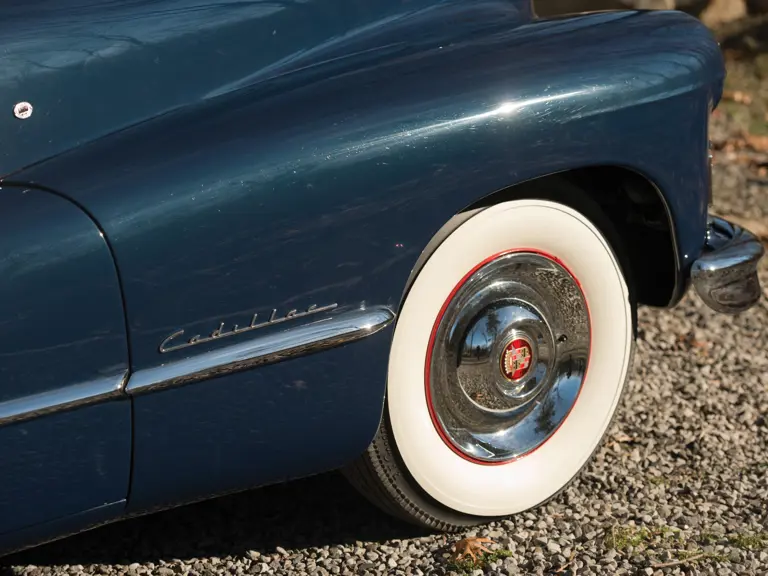

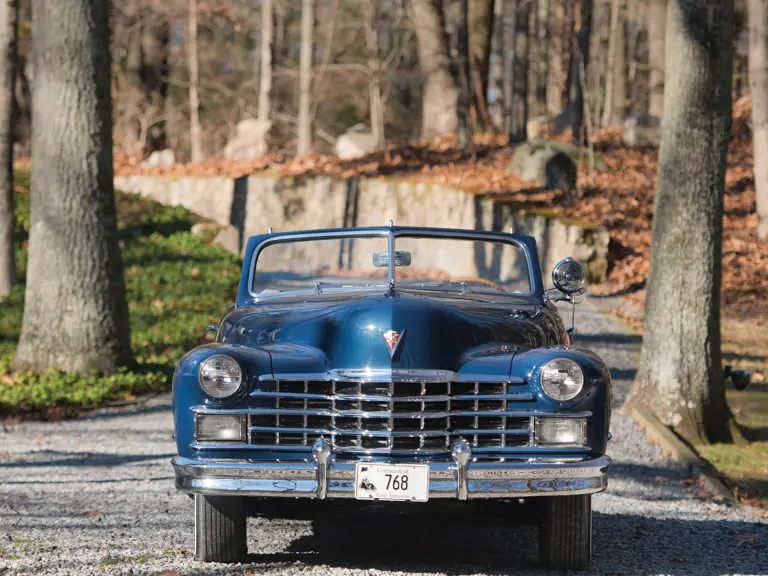
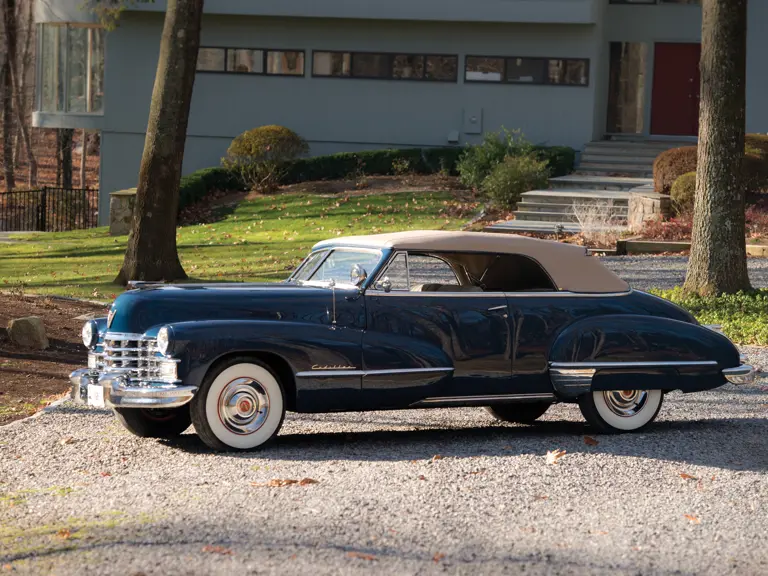
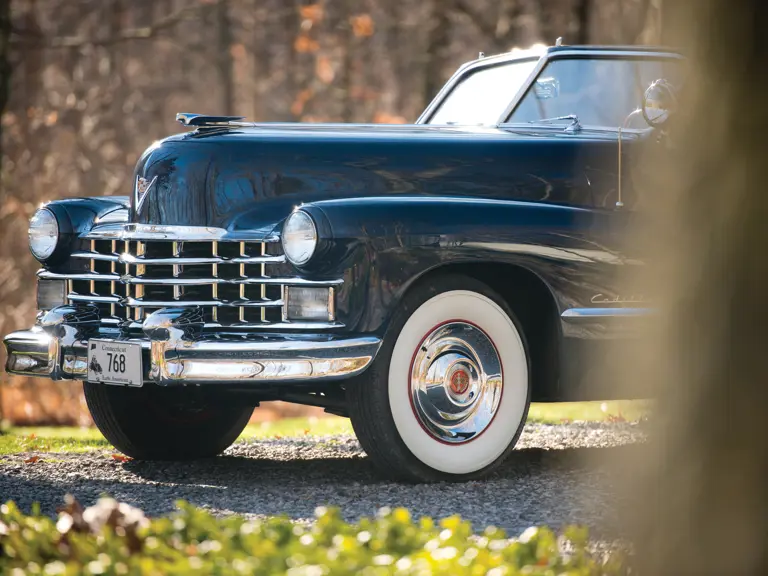
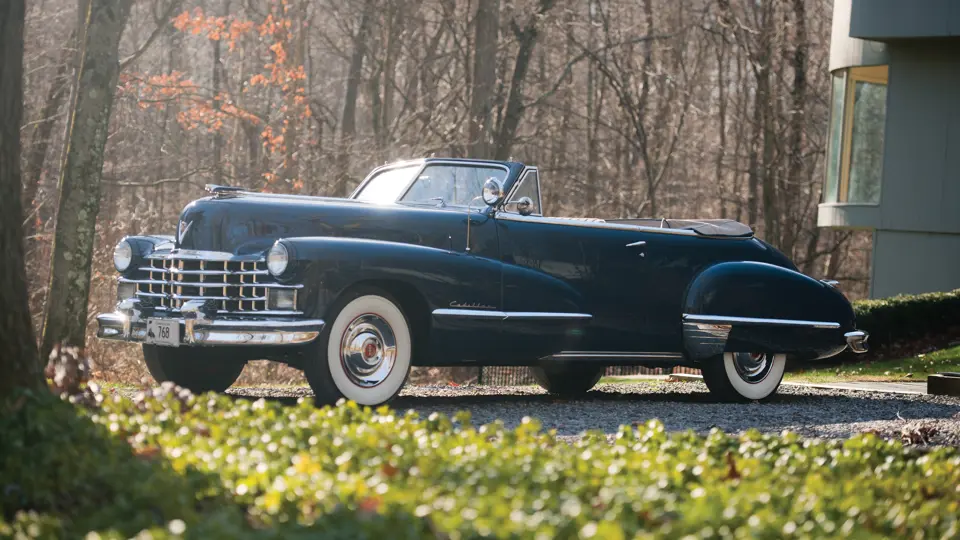
 | Amelia Island, Florida
| Amelia Island, Florida
